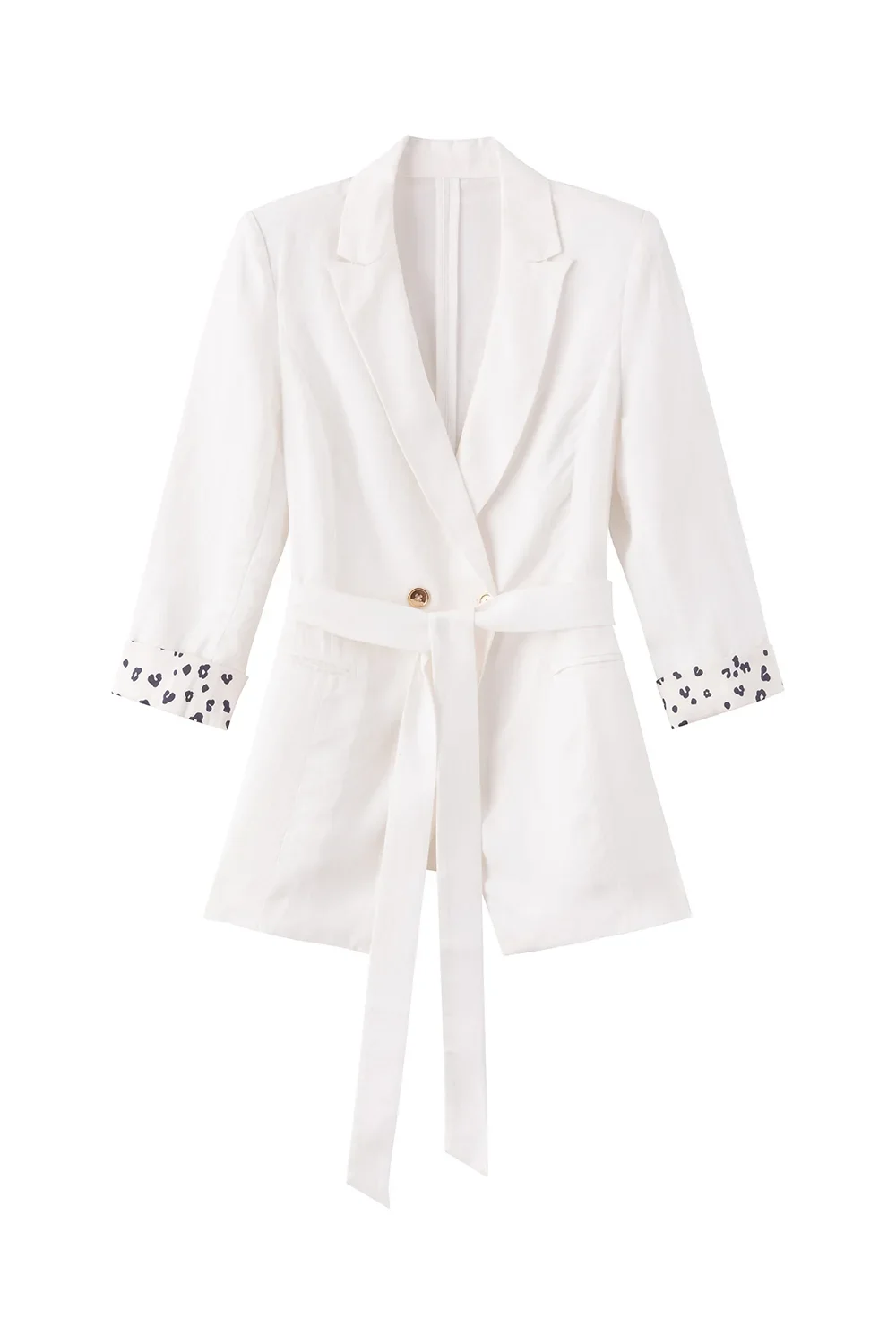In recent years, the fashion industry has witnessed a growing demand for sustainable and eco-friendly clothing options. Tencel, a type of lyocell fabric made from wood pulp, has gained popularity due to its softness, breathability, and environmentally friendly production process. In this blog post, QD Apparel will share the production process of custom women's tencel blended blazer for sale, providing a comprehensive guide to understanding the steps involved in creating this stylish and sustainable garment.
1. Sourcing and Preparation of Tencel Fiber:
The production process of women's Tencel blended blazers begins with the sourcing of Tencel fiber. Tencel is derived from sustainably harvested eucalyptus trees, which are processed into wood pulp. The wood pulp is then dissolved in a non-toxic solvent, creating a cellulose solution that is extruded through fine holes to form fibers. These fibers are then spun into yarns, which will be used to create the fabric for the blazer.
2. Blending Tencel with Other Fibers:
To enhance the properties of Tencel fabric, it is often blended with other fibers such as cotton, polyester, or wool. Blending Tencel with other fibers can improve the durability, stretch, and wrinkle resistance of the fabric. The blending process involves combining the Tencel yarns with the chosen fibers in specific proportions, ensuring a balanced and desirable fabric composition.
3. Fabric Weaving or Knitting:
Once the Tencel blend is prepared, it is time to weave or knit the fabric. Weaving involves interlacing the warp (lengthwise) and weft (crosswise) yarns on a loom, creating a stable and structured fabric. Knitting, on the other hand, involves interlocking loops of yarn to create a more flexible and stretchable fabric. The choice between weaving and knitting depends on the desired characteristics of the final blazer.

4. Dyeing and Printing:
After the fabric is woven or knitted, it undergoes the dyeing and printing process. Tencel fabric has excellent dye absorption properties, allowing for vibrant and long-lasting colors. The dyeing process involves immersing the fabric in a dye bath, where the color is absorbed by the fibers. Printing, on the other hand, involves applying a design or pattern onto the fabric using specialized techniques such as screen printing or digital printing.
5. Cutting and Sewing:
Once the fabric is dyed and printed, it is time to cut and sew the pieces together to create the women's Tencel blended blazer. The fabric is carefully cut according to the pattern, ensuring precision and accuracy. Skilled seamstresses then sew the pieces together using high-quality threads and techniques, ensuring durability and a flawless finish. Attention to detail is crucial during this stage to ensure the blazer's fit and overall aesthetic appeal.
6. Quality Control and Finishing:
Before the blazers are ready for distribution, they undergo a rigorous quality control process. Each blazer is thoroughly inspected to ensure that it meets the brand's standards for fit, stitching, and overall quality. Any imperfections or inconsistencies are addressed and corrected. Once the blazers pass the quality control check, they undergo a finishing process, which may include pressing, steaming, and adding final touches such as buttons, zippers, or embellishments.
Conclusion:
The production process of women's Tencel blended blazers involves several intricate steps, from sourcing the Tencel fiber to the final finishing touches. This sustainable and eco-friendly fabric offers a stylish and comfortable alternative to traditional blazers. By understanding the production process, consumers can make informed choices and support brands that prioritize sustainability and ethical manufacturing practices. As the fashion industry continues to evolve, the production of women's Tencel blended blazers serves as a testament to the growing demand for environmentally conscious clothing options.
https://www.qdapparel.com/Production-process-of-women-tencel-blended-blazer.html
QD
sales@qdapparel.com
